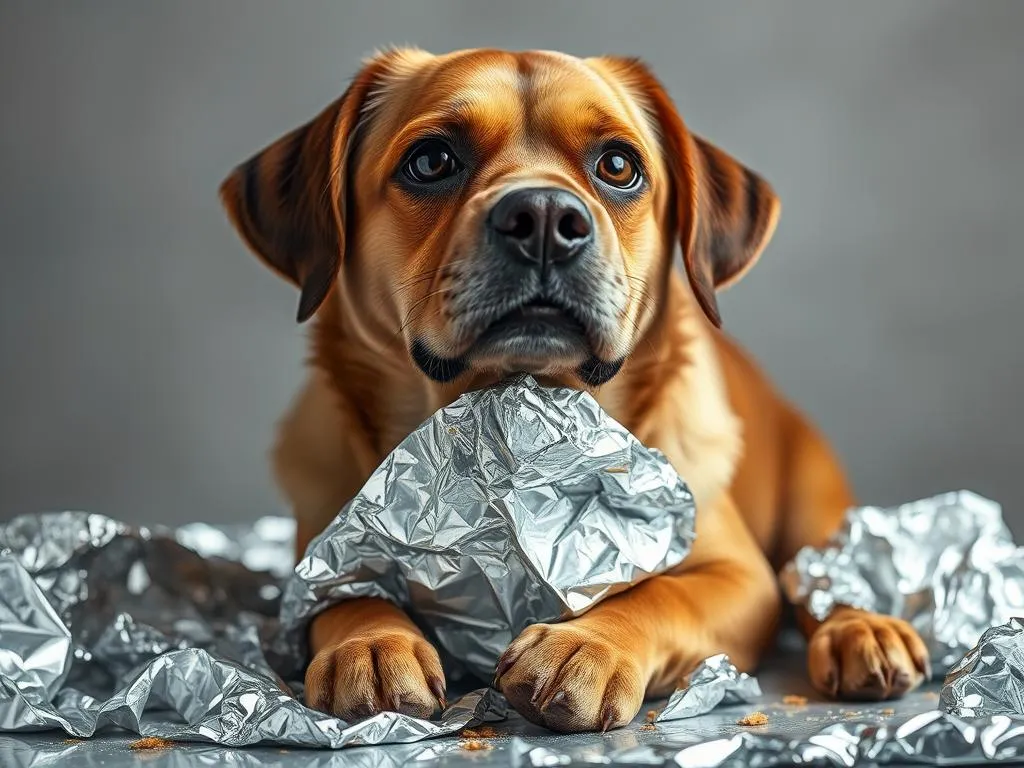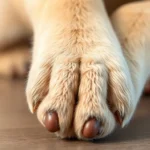
Dogs are curious creatures, often getting into things they shouldn’t. One common issue that many dog owners face is when their furry friends ingest non-food items. Among these items, aluminum foil is a frequent culprit. Understanding the potential risks associated with my dog ate aluminum foil is crucial for any pet owner.
Understanding Dogs and Their Eating Habits
Why Do Dogs Eat Non-Food Items?
Dogs may eat non-food items for several reasons. Boredom is a significant factor; dogs that lack stimulation may resort to chewing and ingesting items around the house. Curiosity also plays a role, as dogs often explore their environment by tasting things. Additionally, hunger can drive them to consume anything they find, including aluminum foil, especially if it has remnants of food on it.
Pica is a condition characterized by the compulsion to eat non-food items. Dogs with pica may consume a variety of objects, ranging from dirt to plastic. If your dog frequently eats non-food items, it could be a sign of boredom, anxiety, or nutritional deficiencies, necessitating a discussion with your veterinarian.
Common Non-Food Items Dogs Ingest
Dogs often ingest a range of non-food items, including:
- Toys
- Clothes
- Garbage
- Aluminum foil
Aluminum foil is commonly found in households, used for cooking and food storage. Its shiny texture and potential food remnants can attract dogs, leading to ingestion.
Risks of Aluminum Foil Ingestion
Potential Health Hazards
Ingesting aluminum foil can pose several physical risks to dogs. The sharp edges of the foil can cause cuts in the mouth, throat, or digestive tract. If a large piece is swallowed, it can lead to blockages in the intestines, which can be life-threatening. Perforation of the intestines due to sharp edges is also a serious concern.
There are also chemical risks associated with aluminum foil ingestion. While aluminum itself is not highly toxic, excessive consumption can lead to aluminum toxicity, especially in dogs with underlying health issues. Reactions with certain substances can also occur if the foil was in contact with hazardous materials.
Symptoms to Watch For
If your dog has ingested aluminum foil, it’s essential to monitor their health closely. Immediate symptoms may include:
- Vomiting
- Diarrhea
- Lethargy
- Loss of appetite
- Abdominal pain
Long-term symptoms can develop if there is an internal blockage or damage, including:
- Persistent abdominal pain
- Weight loss
- Changes in behavior (e.g., increased lethargy)
Immediate Actions to Take
Assess the Situation
The first step after discovering that your dog has consumed aluminum foil is to assess the situation. Try to determine how much foil was ingested. If it was a small piece, the risk may be lower, but larger quantities or sharp pieces require immediate attention. Evaluate your dog’s behavior and look for any immediate symptoms.
Contacting Your Veterinarian
It’s crucial to consult a veterinarian promptly. Inform them about the situation, including the amount of aluminum foil your dog ingested, their size, and any symptoms you have observed. This information will help the vet assess the risk and decide on the necessary actions.
First Aid Steps Before the Vet Visit
While waiting to see the vet, there are some first aid measures you can consider. Do not attempt to induce vomiting unless specifically advised by your veterinarian. In some cases, inducing vomiting can cause more harm than good, especially if sharp objects are involved.
Keep your dog calm and monitor their behavior closely. If they show signs of distress, such as excessive drooling or signs of pain, contact your veterinarian immediately.
What to Expect at the Vet’s Office
Diagnostic Procedures
When you take your dog to the vet, they will likely conduct a thorough examination. This may include diagnostic tests such as X-rays to check for blockages or damage in the gastrointestinal tract. Blood tests may also be performed to assess your dog’s overall health and check for signs of internal bleeding or infection.
Treatment Options
The treatment provided by your veterinarian will depend on the severity of the situation. If the aluminum foil has caused a blockage, they may need to induce vomiting or perform surgery to remove it. In less severe cases, your vet might monitor your dog’s condition and recommend a special diet to help them pass the foil naturally.
After treatment, your vet will provide instructions for aftercare and monitoring. Follow these carefully to ensure your dog’s recovery.
Prevention and Management
Training Your Dog
Preventive measures are crucial for avoiding future incidents. Training your dog to discourage the ingestion of non-food items can be effective. Use positive reinforcement techniques, rewarding your dog for ignoring non-food items. Teaching commands such as “leave it” can help them understand what is acceptable to chew and what is not.
Safe Environment Practices
Creating a safe environment for your dog is essential. Keep harmful items, including aluminum foil, out of reach. Store food items securely and dispose of waste properly to minimize the chance of your dog finding something harmful. Providing safe alternatives for chewing and play, such as toys and chews, can also help keep your dog engaged and less likely to seek out non-food items.
When to Seek Help
If your dog continues to exhibit behaviors associated with pica or frequently tries to eat non-food items, consult your veterinarian. They can help identify any underlying behavioral or health issues that may require attention. Regular vet check-ups are also crucial for monitoring your dog’s health overall.
Conclusion
Ingesting aluminum foil can pose serious health risks for dogs, but understanding how to respond can make a significant difference. If my dog ate aluminum foil, it’s essential to assess the situation, contact your veterinarian, and monitor your dog for symptoms. Preventive training and creating a safe environment can help reduce the likelihood of future incidents. Ultimately, remaining vigilant and proactive about your pet’s health is the best approach to ensuring their well-being.
FAQs
Can aluminum foil cause long-term damage?
Yes, aluminum foil can cause long-term damage if it leads to blockages or perforations in the digestive tract. If your dog shows any symptoms after ingesting foil, seek veterinary attention promptly.
What if my dog ate a small piece of aluminum foil?
If your dog ingested a small piece of aluminum foil but shows no immediate symptoms, monitor them closely. However, it’s still advisable to consult your veterinarian for guidance.
Are there any home remedies for aluminum foil ingestion?
There are no effective home remedies for aluminum foil ingestion. It is best to consult a veterinarian for the appropriate treatment and care.
How can I train my dog to avoid eating non-food items?
Training your dog to avoid eating non-food items involves positive reinforcement techniques. Teach commands like “leave it” and provide safe alternatives for chewing and play to redirect their attention away from harmful items.









